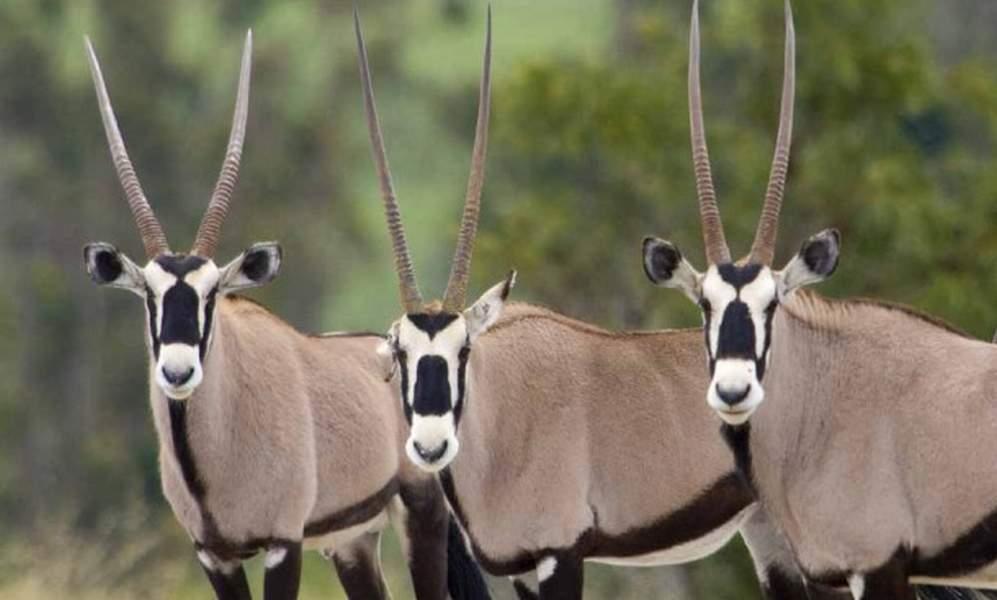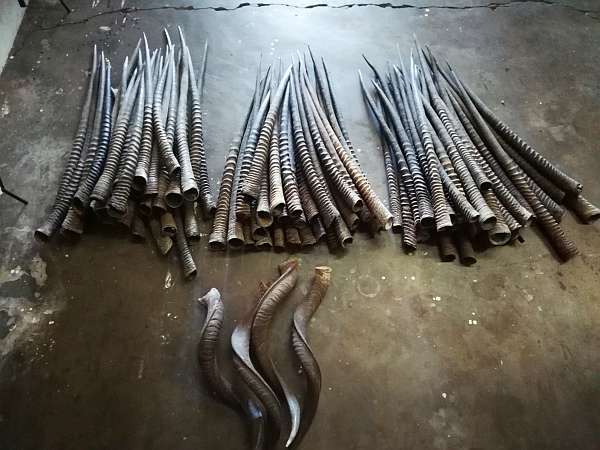African Gemsbok horns

Click on image for larger view
African Gemsbok horns
Size: 75 - 80cm (L)
Price is for one Gemsbok horn
African loose Gemsbuck horns( called Gemsbok in South Africa ) that are treated and cleaned ready for export. The Gemsbuck horn is a magnificent horn that is formed in a straight style with a slight curve and has been used in many African art decor designs such as lamps and furniture.
The Gemsbok horn can be bough in its natural state or polished.
All our Gemsbok horns have been obtained through legal culls done by conservation authorities in South Africa.
The Gemsbok or Oryx is known in South Africa as the Gemsbok and internationally as the Gemsbuck or Oryx. All African Gemsbok horns require permits for export purposes. The price of the permit is included in the shipping cost.
All sizes listed are approximate. Because of the nature of African animals Gemsbok horns there will be slight variations from one Gemsbok horn to the next, so the Gemsbok horn you receive will be similar to the picture but not identical
View our African Game skulls and horns gallery for more African skins or e-mails us if you are looking for a particular skull not on our website.
Other items available below or return to our main African horns skull page



To view other Gemsbok products, return to our African game skin or skull main page
Facts about this animal
Also known as Oryx.....
The Gemsbok or Gemsbuck is a large antelope in the Oryx genus. It is native to the arid regions of Southern Africa, such as the Kalahari Desert in Namibia and is found in south-west Africa, occurring in Botswana, Namibia, South Africa and Zimbabwe.
The most distinctive features of this heavily built antelope are its long, rapier-shaped horns and striking black and white facial markings . The beautiful horns of the Gemsbok are sought after as charms in many cultures and were even sold as unicorn horns in medieval England . The body is fawn-grey with a black stripe along the side separating the upperparts from the white underparts, and there are extensive black areas on its upper legs. The Gemsbok has a long, horse-like tail, and whilst both sexes possess the impressive horns, those of the male are shorter and more robust than the female’s.
Gemsbok generally occur in semi-arid to arid grasslands and bushlands, sandy and stony plains, dunes and alkaline flats; they also inhabit light woodland.
The Gemsbok is highly valued as a trophy animal and is an important component of game hunting activities. Ironically, it is this hunting activity, and the economic contribution it makes to the countries in which it occurs, which ensures that population numbers are maintained. The majority of the population currently occurs within national parks and private land, and whilst the Gemsbok is not considered to yet be threatened with extinction, it is somewhat reliant on its continued existence within these areas.
Factsheet
Scientific classification
- Swahili Name: Choroa
- Scientific Name: Oryx gazella
- Common Name: Oryx
- Size: 47 inches at the shoulder
- Weight: 250 to 390 pounds
- Lifespan: 20 years
- Habitat: Dry plains
- Diet: Grazers
- Gestation: 8 to 81/2 months
- Predators: Lions, cheetahs,wild dogs, hyenas
Conservation status: Least concern / abundant











